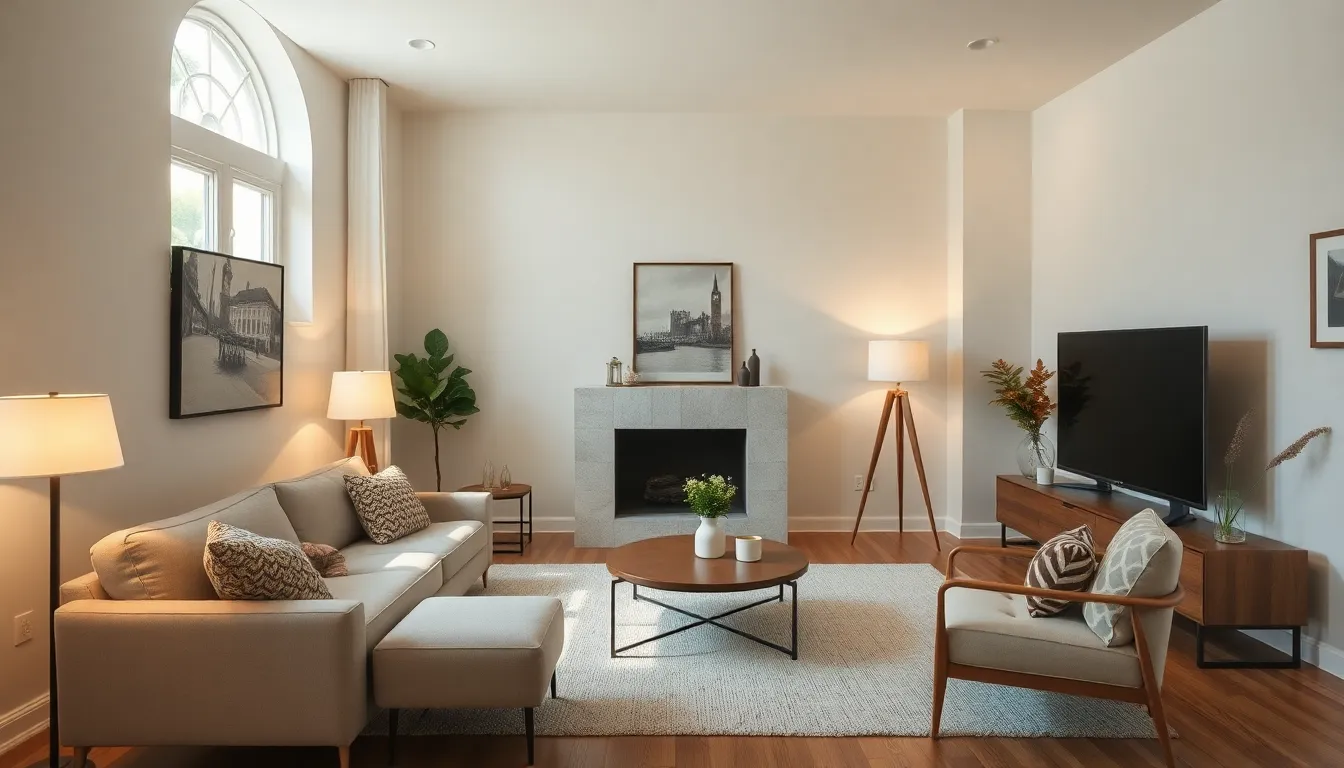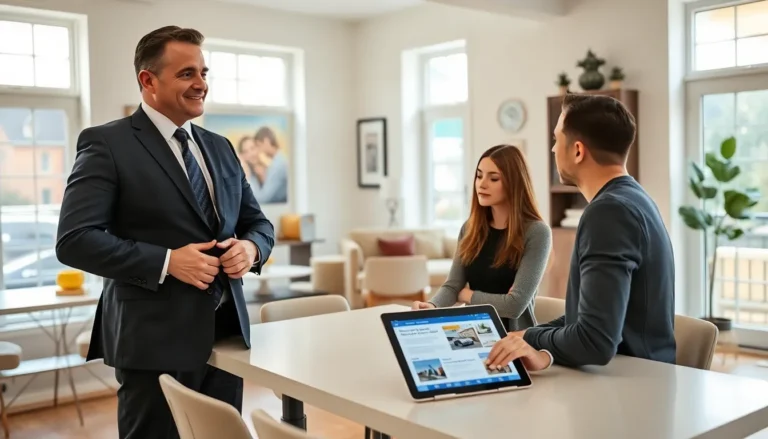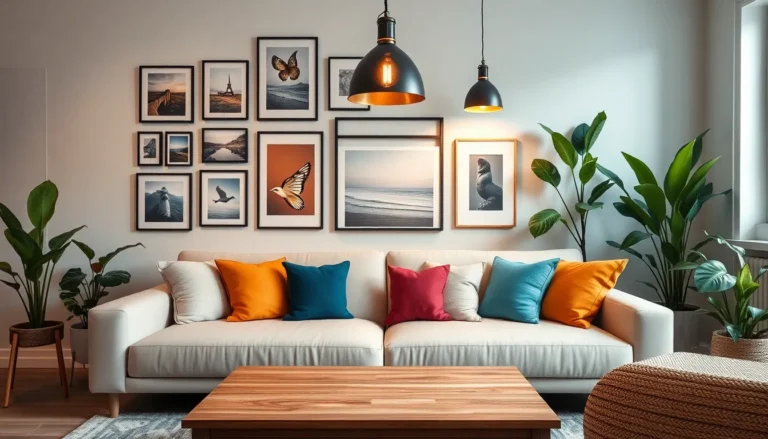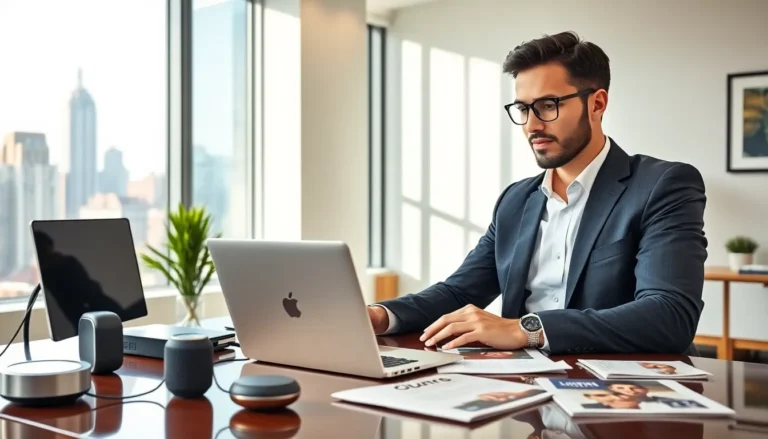In the world of rental properties, first impressions matter more than a cat meme on the internet. When potential tenants walk through the door, they should feel like they’ve just stepped into their dream home—not a scene from a horror movie. That’s where rental property staging struts in like a superhero, transforming bland spaces into inviting havens that make people say, “Wow, I could totally live here!”
Table of Contents
ToggleWhat Is Rental Property Staging?
Rental property staging refers to the process of preparing a rental space to attract potential tenants. It involves strategically arranging furniture and decor to present the property in its best light. This practice not only highlights the property’s features but also creates an inviting atmosphere that enhances the overall appeal.
Enhancing emotional connection plays a critical role in this process. Property staging aims to help prospects envision their future in the space, making it feel like home. By utilizing neutral colors and minimalistic designs, staging allows tenants to imagine their personal styles within the property.
Incorporating essential furnishings can also showcase the space’s functionality. Living rooms might include a cozy sofa and a coffee table, while bedrooms benefit from a neatly made bed and complementary decor. Each room should demonstrate the potential for comfortable living while maximizing available space.
Cost-effective staging techniques include decluttering, deep cleaning, and fresh paint. These methods improve aesthetic appeal and may increase rental prices. For instance, a property that feels spacious and clean is more likely to attract qualified tenants.
Key components of successful staging involve presentation and atmosphere. Lighting remains crucial, as it can dramatically alter perception. Natural light highlights the property’s best features, while soft artificial lighting fosters warmth during evening viewings.
Ultimately, effective rental property staging results in faster leasing processes and higher tenant satisfaction. Properties that are staged effectively demonstrate their full potential, resulting in increased interest and engagement from prospective renters.
Benefits of Rental Property Staging

Rental property staging offers several advantages for landlords and property managers. It effectively draws in potential tenants, significantly enhancing the chances of leasing a space.
Attracting Potential Tenants
Staged properties provide a welcoming atmosphere that captivates prospective renters. Each room is thoughtfully designed to highlight its best features, making it easier for viewers to visualize themselves living there. Using neutral colors and tasteful decor creates a blank canvas, inviting tenants to project their styles. Research indicates that staged properties often attract more inquiries, which leads to quicker leasing times. Effective staging showcases the property’s functionality, compelling prospects to make decisions faster.
Enhancing Property Value
Investment in staging can enhance the overall value of rental properties. A well-staged space often commands higher rental prices due to its appealing aesthetic. Property owners may see an increase in demand, as prospective tenants associate staged environments with quality living. Studies suggest that staged homes can achieve rental rates that are 5% to 15% higher than non-staged properties. Improved appearance and atmosphere directly influence tenant satisfaction, resulting in longer lease terms and reduced turnover rates.
Key Tips for Effective Staging
Effective staging significantly enhances rental properties. Optimized spaces create lasting impressions on potential tenants and elevate leasing opportunities.
Decluttering and Depersonalizing
Decluttering simplifies spaces by removing unnecessary items. This practice helps tenants visualize their own belongings in the rental. Personal items, such as family photos and unique decor, can create emotional barriers. Neutralizing the environment allows potential renters to see the property as a blank canvas. Removing excess furniture maximizes space and highlights key features. A tidy, organized environment fosters a welcoming atmosphere. With fewer distractions, prospects can focus on the property’s strengths.
Choosing the Right Furniture and Decor
Choosing the right furniture ensures the property feels both functional and inviting. Furniture selection should reflect the space’s size and layout. Scaled-down, adequately sized pieces enhance flow and make rooms appear larger. Neutral decor, such as soft colors and simple patterns, appeals to a broad audience. Utilizing essential furnishings, like stylish sofas and comfortable beds, highlights the property’s advantages. Thoughtful decor choices add warmth without overwhelming the space. Incorporating light fixtures effectively improves ambiance, while plants freshen the environment. Aligning furniture with the property’s character increases attraction for potential tenants.
Cost Considerations for Rental Property Staging
Staging a rental property involves various costs that landlords and property managers should evaluate. First, there’s the expense of furnishings and decor, which can vary based on quality and style. Renting furniture often proves economical, allowing flexibility in design without high upfront costs.
Next, consider the cost of professional staging services. Hiring experienced stagers typically ranges from $1,500 to $5,000, depending on property size and service scope. Property owners appreciate this investment, as expert staging can lead to increased rental prices.
Maintenance costs also factor into staging. Ensuring the rental space remains clean and well-presented requires ongoing expenses for housekeeping or regular upkeep. Property managers often allocate funds for routine cleaning services or deep-cleaning before showings.
Repairs may arise before staging. Addressing issues such as peeling paint or damaged flooring not only prevents potential tenant complaints but also enhances overall appeal. Investing in minor repairs usually pays off by attracting higher-quality tenants.
Budgeting for staging supplies is essential. Items such as fresh paint, wall art, and decorative accessories contribute to creating an inviting environment. Leveraging cost-effective options like DIY updates allows landlords to maintain competitive pricing while staging their rentals effectively.
Finally, staging can lead to financial benefits. Staged properties frequently command rental prices 5% to 15% higher than non-staged ones. Property managers notice quicker leasing cycles, reducing vacancy periods and maximizing overall revenue. Understanding these cost aspects enables effective planning for successful rental property staging.
Effective rental property staging is a game changer for landlords and property managers. By transforming a space into an inviting environment, they can significantly enhance its appeal to potential tenants. This process not only fosters emotional connections but also showcases the property’s best features.
Investing in staging can lead to higher rental prices and quicker leasing times. With careful planning and attention to detail, landlords can create a welcoming atmosphere that resonates with prospective renters. Ultimately, the benefits of staging extend beyond aesthetics, contributing to tenant satisfaction and long-term occupancy.






